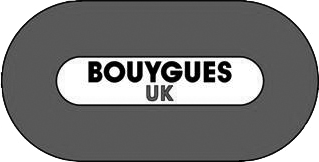June 8, 2021 8:17 am
On Thursday 1st April 2021, Van Elle, the UK’s leading ground engineering and geotechnical contractor, announced the acquisition of ScrewFast Foundations Limited. All ScrewFast employees, including the entire management team led by managing director Dan Dye, will join the Van Elle Group. Mark Cutler, CEO at Van Elle, said: “This is a very exciting, with complementary, specialist piling activities which strengthens our leading position in growth markets such as highways and rail. “ScrewFast has an established client base and proven track record of highly specialist services and will support the group in the delivery of its medium-term strategic objectives. “The two businesses have a similar culture and ethos which is very important to us, and we look forward to working...
July 5, 2019 11:36 am
They have been around since 1833 but helical piles are yet to reach their full capacity as the innovative and brilliant examples of engineering that they are. Helical piles were invented by a civil engineer from Ireland called Alexander Mitchell, who was, astoundingly, blind. He won the Telford Medal for his invention and then three years later, the first helical piles were put to use in mooring ships. They were at first, limited to nautical use with Maplin Sands Lighthouse being the first structure to benefit from the installation of helical piles and next came Brighton Pier. As the realisation of what helical piles were capable of, use of them grew exponentially. Today we use them in many applications, including:...
June 28, 2019 3:35 pm
Understanding the key differences between helical piles and concrete is vital before you can begin to cast judgement on which is better. Helical piles consist of a steel shaft which has a plate welded to the exterior surface; this plate assists the screwing in motion of the device as it is inserted into the earth and offers strong resistance against any movement to the shaft. Concrete works by spreading across a surface and offering resistance in that way. Where a helical pile literally anchors a structure firmly into the ground, concrete merely glues it into place. This of course means that the building or structure being supported by concrete is more at risk of structural damage because concrete is vulnerable...
June 21, 2019 4:32 pm
Unless you are in the industry or have had reason to research, it’s possible that you have many questions about helical piles and what they are. Here are some in-depth questions and answers to cover the most important facts. What is a helical pile? In short, it’s a device for building foundations on any type of ground. The device…” helical pile” or screw pile, is a metal shaft with special plates attached to it’s length at certain points. How do they work? A screw pile is very similar to an ordinary screw. Compare a screw to a nail and think about how a nail must be hit to install it whereas a screw is smoothly inserted. That’s what screw piles...
June 14, 2019 12:27 pm
Sometimes known as manufactured homes, what older generations in the UK will call Prefabricated homes are on the rise in the UK. The old prefabs of post war Britain are mostly long gone, though a few remain as monuments to a simpler time. Built as temporary answers to a housing problem after the war when so many properties had been destroyed, the old prefabs provided much-loved homes for many families and some stayed in theirs for the rest of their life. Now as some of the UK’s larger cities struggle to provide enough affordable homes for people with low-incomes and the retired, it seems that prefabs have once again come to the fore. Modular developments in Manchester and in Liverpool...
June 7, 2019 2:25 pm
Soil varies enormously depending on geographical position. Country by country and county by county, soil types are different and even in areas where the soil is quite uniform there are always anomalies…spots where the ground is particularly chalky or unstable. All buildings need a strong foundation or the structure simply won’t last. Unstable ground makes for unstable buildings. The strength and stability of any soil will depend on its properties. Clay-based soil is often very stable when compared to sandy soils but the best is soil with a mixture…gravelly type soils in other words. They have the best stability because of the relative firmness when compared to dry sandy soil which will always shift or moist soil which is prone...
May 31, 2019 4:21 pm
Boardwalks are an important feature in wildlife sanctuaries and in protected wetland areas where sensitive wildlife needs to be protected. The minimum disturbance is preferable when allowing pedestrians into the area to observe and enjoy the landscape. Usually elevated to allow for the ground beneath to be undisturbed, elevated boardwalks are an important feature in many places of environmental interest all over the world. Various methods are utilised in the building of elevated boardwalk foundations. Water presence is of course, an issue and excavating into wet ground is tricky due to foundation flooding. Therefore, helical piles are preferable in this situation. A helical pile or screw pile is a foundation system which utilises steel shafts with plates welded up the...
May 24, 2019 12:16 pm
Sinking foundations are caused mainly by unstable ground and are a big problem for the owner of any building. The signs of a sinking foundation are quite obvious once you know what to look for. A sideways slant to a building is one of the most obvious warnings that all is not well beneath the ground but there are some other, less noticeable clues that your foundation is having a struggle. Tell-tale signs include windows and doors which won’t close properly or simply “look off”. Cracks in basements or on walls in the main living parts of a home or business. Puddles of rainwater which gather around the base of a building are another symptom that something is amiss. Once...
May 17, 2019 1:13 pm
Helical piles have been slowly but surely coming to note across the globe as people begin to realise how broad they can be in their application. Not only are helical piles the best choice for building on unstable ground, they’re also cost-effective and ecologically friendly and in recent years they’ve been proving themselves valuable in terms of the conservation of heritage sites. The use of screw piles for the restoration of historic buildings has many advantages. One of the main concerns for teams involved in restoring heritage sites is that of preserving the historic fabric of the site, even that which is not visible. Another concern is minimising disruption or damage to any remaining structure and installing screw piles is...
May 10, 2019 11:05 am
Unless you work in the industry or have had reason to do your research, it’s unlikely that you know much about helical piles. We’ve put together 10 interesting facts for you, which will hopefully answer any questions you may have, but if you have any more, please don’t hesitate to get in touch. Helical piles are a type of building foundation, consisting of a steel shaft with steel plates welded together at strategic positions. They are designed to hold the weight of whatever structure they are supporting. Invented by Alexander Mitchell nearly 200 years ago, helical piles are becoming increasingly more popular in the construction industry. They anchor a structure to the ground, unlike concrete which merely glues it...




















